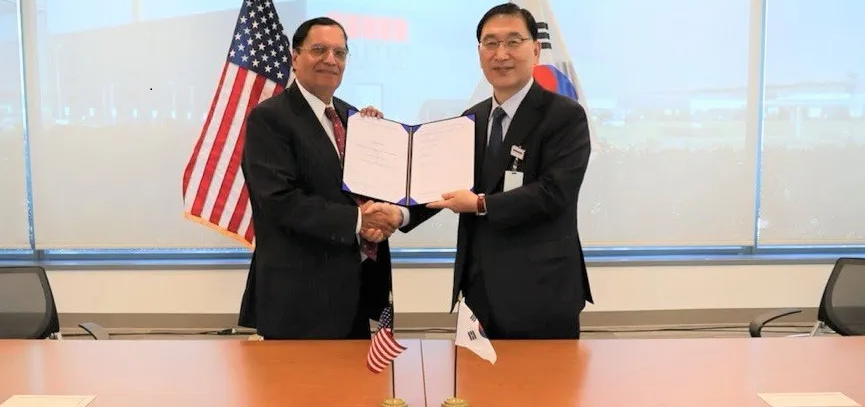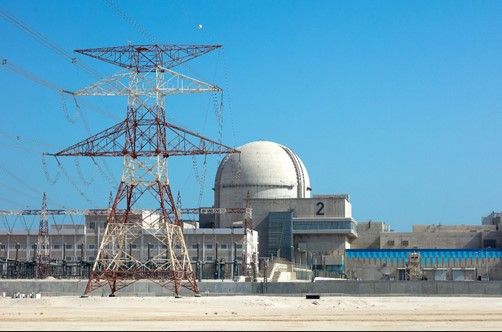An aerial view of the Radioactive Waste Management Complex at the Idaho National Laboratory site. (Photos: DOE)
Idaho Gov. Brad Little, attorney general Lawrence Wasden, Idaho legislators, county and city representatives, and the Department of Energy’s cleanup program management staff gathered at the Idaho National Laboratory site on March 30 to mark the completion of a cleanup project that helps protect the Snake River Plain Aquifer and fulfills a commitment with the State of Idaho.
NS Savannah at Pier 13 in Baltimore, Md., in 2012.
Utah-based EnergySolutions is joining Radiation Safety and Control Services (RSCS) in the decommissioning of NS Savannah, the world’s first nuclear-powered merchant ship, currently berthed at the Port of Baltimore in Maryland. EnergySolutions announced on March 29 that a joint venture of the two companies, Nuclear Ship Support Services, is conducting the final phases of decommissioning the ship’s reactor, which was defueled in 1975 but remains in place.
Holtec president and chief executive officer Kris Singh (left) and Hyundai E&C president and CEO Yoon Young-Joon at the teaming agreement signing ceremony. (Photo: Holtec)
Holtec International and Hyundai Engineering & Construction have signed an agreement to cooperate in the area of nuclear plant decontamination and decommissioning.
Under the teaming agreement, Hyundai E&C will participate in D&D activities at Holtec-owned decommissioning sites in the United States to build its capabilities and experience in preparation for decommissioning projects in South Korea, which will be undertaken by the two companies. The agreement also provides for the two companies to further expand their cooperation internationally.
March 30, 2022, 11:55AMANS Nuclear CafeJacopo Buongiorno, Steven Nesbit, Malcolm Grimston, Lake Barrett, Matthew L. Wald, and Andrew Whittaker The six reactors at the Zaporizhzhia nuclear power plant in southeastern Ukraine.
On March 4, Russian forces set fire to an office building at Ukraine’s Zaporizhzhia nuclear power plant, raising fears about reactors being damaged. The attack stirred up memories of the Chernobyl accident in 1986, a reaction that longtime nuclear opponents are taking advantage of to rekindle their cause. However, the reactors operating in Ukraine today are profoundly different from the design used at Chernobyl, and are, by nature, difficult to damage.
Let’s set the record straight and explain the risks of nuclear power plants in war zones.
U.S. Sen. Joe Manchin (center) tours the ITER site with ITER chief scientist Tim Luce. (Photo: ITER)
“We cannot eliminate our way to net zero,” said Sen. Joe Manchin (D., W.Va.) during a visit to the ITER site in Cadarache, France, on March 25. “We have to innovate, not eliminate, our way to carbon neutrality."
Manchin was joined by Ali Nouri, assistant secretary for congressional and intergovernmental affairs at the Department of Energy; Kathy McCarthy, director of the U.S. ITER Project Office; and other U.S. officials for a tour of the ITER Assembly Hall led by ITER chief scientist Tim Luce, head of the ITER Science and Operations Domain. The visit was described in an ITER Newsline article published on March 28.
The Fuqing nuclear power plant. (Image: CNNC)
The Fuqing nuclear plant’s Unit 6, one of two Chinese-designed and -developed Hualong One reactors at the site, has entered commercial operation, China National Nuclear Corporation (CNNC) announced on March 25. The milestone was reached some 14 months after the reactor’s twin, Fuqing-5, became the first Hualong One in the world to enter commercial operation.
Also known as the HPR1000, the Hualong One is a 1,000-MWe Generation III pressurized water reactor that incorporates design elements of CNNC’s ACP1000 and China General Nuclear Power Group’s ACPR1000+.
Data from research firm PitchBook show a spike in nuclear investment. (Graph: Bloomberg)
The trend of big-tech billionaires of Silicon Valley investing in next-generation nuclear energy startup companies continues. In a March 22 article on the Bloomberg website, Lizette Chapman, of the site’s venture capital group, writes that these investors view nuclear power as “a solution to both cutting carbon emissions and weaning the world off now-controversial Russian gas.”
A view of the village of Min Kush in central Kyrgyzstan. (Photo: EBRD)
The remediation of two former Soviet-era uranium mining sites in Kyrgyzstan has been completed on schedule and below budget, despite difficulties caused by the COVID-19 pandemic, the European Bank for Reconstruction and Development (EBRD) announced on March 28.
Unit 2 at the UAE’s Barakah nuclear plant. (Photo: ENEC)
Unit 2 at the United Arab Emirates’ Barakah nuclear power plant has entered commercial operation, Emirates Nuclear Energy Corporation (ENEC) announced on March 24. Unit 2 adds an additional 1,400 MW of zero-carbon emission electricity to the UAE’s national grid, bringing the total amount of electricity produced at Barakah to 2,800 MW.
U.S. undersecretary of state for arms control and international security Bonnie Jenkins (left) and Philippine energy undersecretary Gerardo D. Erguiza Jr. (center) sign a memorandum of understanding on nuclear cooperation at the State Department. Looking on (right) is Philippine ambassador to the United States Jose Manuel Romualdez. (Photo: Philippine Embassy, Washington, D.C.)
The United States and the Philippines recently signed a memorandum of understanding on strategic civil nuclear cooperation to help boost the development of the latter’s nuclear energy program.
The Palisades plant near Covert, Mich. (Photo: Entergy)
“Many states have made carbon dioxide–reduction plans with no hope of success. But if they want to meet even a portion of those goals, they must put nuclear power back on the table.” So opined Tim Cavanaugh, senior editor at the Mackinac Center for Public Policy, in an essay published by The Hill on March 23.
Aerial view of the High Flux Isotope Reactor. (Photo: ORNL)
The nonproliferation-related monitoring of nuclear reactor operations received a boost from a new study focusing on the use of seismic and acoustic data for such purposes, ScienceDaily reported last week. The study, conducted by investigators at Oak Ridge National Laboratory, was published March 9 in the journal Seismological Research Letters.
Sandia National Laboratories researchers Melissa Mills, left, and Kristopher Kuhlman peer through a WIPP salt sample.
Last fall, scientists from Sandia, Los Alamos, and Lawrence Berkeley national laboratories began the third phase of a years-long experiment to understand how salt and very salty water behave near hot nuclear waste containers in a salt-bed repository. Initiated in 2017, the Brine Availability Test in Salt (BATS) project is part of a spent nuclear fuel research campaign within the Department of Energy’s Office of Nuclear Energy (DOE-NE).
Czech prime minister Petr Fiala and ČEZ CEO Daniel Beneš (foreground, third and fourth from left, respectively). (Photo: ČEZ)
 The governments of four Canadian provinces—Ontario, New Brunswick, Saskatchewan, and Alberta—have published a plan outlining the path forward for the advancement of small modular reactors, which could provide the nation with safe, reliable, and zero-emissions energy and create new export opportunities.
The governments of four Canadian provinces—Ontario, New Brunswick, Saskatchewan, and Alberta—have published a plan outlining the path forward for the advancement of small modular reactors, which could provide the nation with safe, reliable, and zero-emissions energy and create new export opportunities.





 The Nuclear Innovation Alliance released a report on March 25 titled “
The Nuclear Innovation Alliance released a report on March 25 titled “.png)











